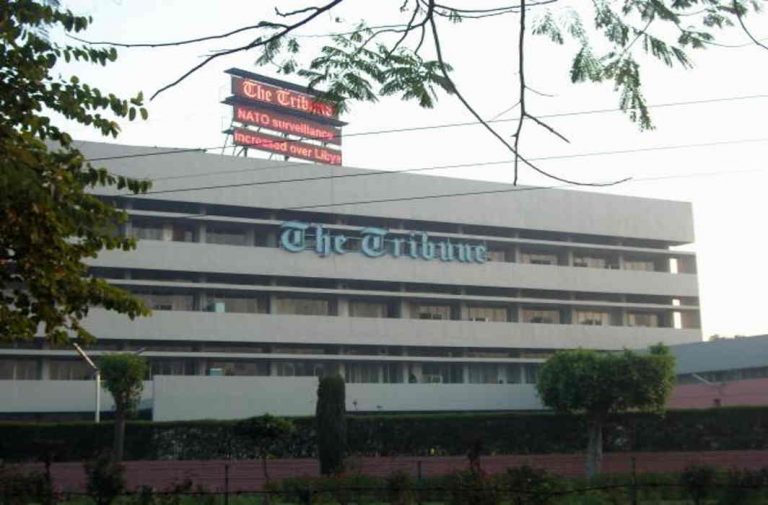
The Axeman Cometh
The Chandigarh-based newspaper, The Tribune, is currently witnessing an unprecedented bloodbath with over a dozen editorial employees sacked and some more on the way out. The “purge” started shortly after the appointment of its new editor, Rajesh Ramachandran, who was hired from Outlook magazine. Those who have been shown the door are contractual employees. No written reason has been given to those sacked. In some cases the HR Department was directed to disallow entry of employees into the office. Some were not even informed in advance and were relieved without a notice period. They were, however, paid a month’s salary as per the provisions of their contracts.
The first one to go was none other than newly appointed Executive Editor Anand Soondas, who has since returned to The Times of India, following a running battle with the new Editor. Insiders say that the Editor is being directed by a section of the all-powerful Trustees who gave the signal for sacking specific employees. One of the reasons being floated is the large salary bill which has added to losses at the Trust-run newspaper. Whatever the reason, a sense of uncertainty has gripped contractual employees as it is believed that over two dozen reporters, sub-editors and other editorial staff face the axe.
Managing the Media
Following the e-mailed “interviews” of Prime Minister Narendra Modi by two national newspapers and a leading news agency, which were like printing a handout from the Ministry of Information & Broadcasting, it now appears that the idea originated from the Smriti Irani-led ministry. Under Irani, around 15 handpicked bureaucrats have been assigned the task of selling the Modi government’s “successes” and programmes to the media. Once the mandarins have prepared the briefs on various issues, Irani herself calls up editors she knows, after which follow-up calls are made by either the minister concerned, or the one with the widest media contacts and moles, Arun Jaitley. In the case of the interviews, a set of “frequently asked questions” were drawn up and sent to selected media outlets with the promise of an “exclusive” interview with the prime minister. The Times of India had no idea that the Hindustan Times and ANI were being lured with the “exclusive” tag. The bureaucrats are also tasked with identifying TV channels which telecast anything negative about the government. Party spokesmen and ministers are then advised to boycott the channels—Karan Thapar’s show was a casualty and ABP News followed recently, leading to three senior employees being sacked by the owner.
Paying the Piper
Media owners generally look forward to the Indian Readership Survey (IRS) to see how their publications are faring in terms of number of people who read them. If their numbers are good, and new editions are also doing well, they can hike their advertising rates. The problem is the IRS is a massive and expensive exercise which is financed by media houses. Most have deep pockets but not all are prepared to put their hands in them. The cost of conducting the countrywide survey, research and collating the results is around Rs 20 crore, but so far only 50 percent of media owners have paid up, leaving the fate of IRS 2018 in doubt. More so since the Media Research User Council (MRUC), which handles the exercise, has plans to increase the sample size from 3,30,000 to 3,60,000. Moreover, the MRUC had also asked for an increase of around 50 percent in contributions to cover the cost of upgrading technology and surveying a larger base. The survey is generally conducted once the monsoon is over, which will be in a few weeks, but with half the finance still to come, IRS 2018 could yet qualify as fake news.
Tailpiece
Ex-Prime Minister Atal Bihari Vajpayee’s death was a bonus for newspapers struggling with rising costs of newsprint. The Ministry of I&B took out full-page colour inserts commemorating his life which were carried by 1,300 newspapers, national and regional. Added revenue came from similar commemorative ads put out by BJP state governments in a large number of newspapers, almost as if they were competing with one another.

